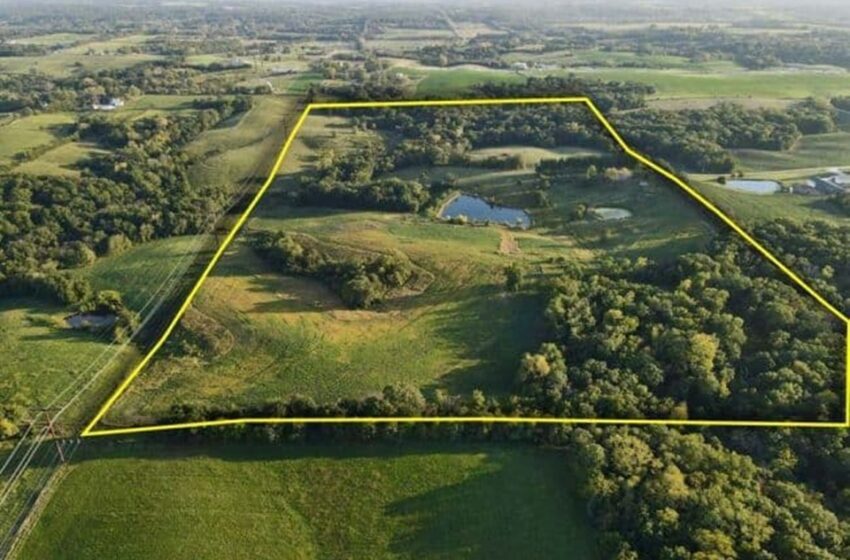From Dream To Reality: Steps To Take When Buying Your First Farm

Key Takeaways:
Purchasing your first farm is a significant milestone promising personal fulfillment and financial opportunities. Understanding the foundational steps, from researching potential properties to securing the right financing, can turn your farming dreams into reality. New farmers can ensure a prosperous venture by embracing sustainable practices and leveraging modern technology.
Introduction
For many aspiring agriculturalists, buying a farm represents the ultimate dream—a venture promising independence and a connection to the land. Yet, transitioning from dream to reality involves more than just wishful thinking. This journey requires careful planning, assessment, and dedication to ensure your first farm is a thriving enterprise. This guide outlines the essential steps to help you transition from a farming dream to an operational farm, setting a solid foundation for long-term success.
Define Your Farming Goals
The initial step in buying your first farm is clearly defining your farming goals. Are you interested in crops, livestock, or a combination of both? Clarifying your objectives will guide every decision, from selecting the type of land to purchasing the necessary equipment. By understanding whether your goal is commercial farming, hobby farming, or a self-sustainable lifestyle, you can narrow options and align your investments with your aspirations. Determining the scope and scale of your farm is crucial in focusing your search for the ideal land for sale.
Research Potential Locations
Location is critical in farming, influencing factors like crop viability, market accessibility, and regulatory requirements. Thorough research into potential areas will help identify the optimal location for your farm. Consider climate conditions, soil fertility, water availability, and proximity to markets and supply chains. It’s also advisable to visit several sites and consult with local agricultural experts to comprehensively understand each location’s advantages and challenges. This groundwork is essential in choosing a site that supports your immediate needs and future growth plans.
Assess The Property
Once pinpointing potential locations, assessing the specific properties becomes your next priority. Evaluate the land’s quality, including soil health, water rights, and existing infrastructure like barns, fences, and irrigation systems. Hire a professional to conduct a thorough evaluation. Understanding the property’s strengths and limitations will aid in estimating potential capital investments and operational costs. This assessment ensures the land can fulfill your farming plans and produce the desired yield.
Secure Financing
Farming is a capital-intensive venture, making financing one of the most crucial steps in the purchasing process. Explore various financing options such as agricultural loans, grants, and government programs tailored for new farmers. Developing a realistic budget for land acquisition, development, operational expenses, and unforeseen contingencies is essential. Consulting with financial advisors specializing in agriculture can provide valuable insights into structuring your finances to support a successful farming operation.
Understand Legal Considerations
Before finalizing a farm purchase, it’s imperative to understand the legal considerations involved in land ownership and agricultural operations. Familiarize yourself with zoning regulations, environmental laws, water rights, and local ordinances that may impact your farming activities. Securing the assistance of a legal professional experienced in agricultural law can help navigate these complexities, ensuring compliance and protecting your investment.
Develop A Business Plan
A comprehensive business plan is a roadmap for your farm’s growth and sustainability. Outline your objectives, marketing strategies, production timelines, and financial projections to guide your decisions and attract potential investors if necessary. A well-thought-out plan anticipates challenges and focuses your efforts on achieving measurable goals, setting the foundation for long-term profitability and success.
Implement Sustainable Farming Practices
Sustainable farming practices enhance environmental stewardship and optimize productivity and cost efficiency. Practices such as crop rotation, soil conservation, organic farming, and efficient water use contribute to a healthy ecosystem and sustainable yield. Implementing these practices from the outset ensures that your farm remains a viable and responsible enterprise in the long run.
The Role Of Technology In Farming
Advancements in agricultural technology provide invaluable tools for modern farmers, enhancing productivity and efficiency. Technologies such as precision agriculture, drones, and data analytics can streamline operations, reduce waste, and optimize resource use. Leveraging these innovations allows you to make informed decisions that align with your farming goals and promote sustainable management.
Conclusion
Transitioning from the dream of owning a farm to the reality of managing one is a multi-faceted journey that requires careful planning and informed decision-making. You can establish a thriving farm that meets personal and commercial objectives by clearly defining your goals, researching thoroughly, securing appropriate financing, and embracing sustainable and technological advancements. Dedication and strategic planning can make your dream farm a reality, yielding heartfelt satisfaction and tangible success.